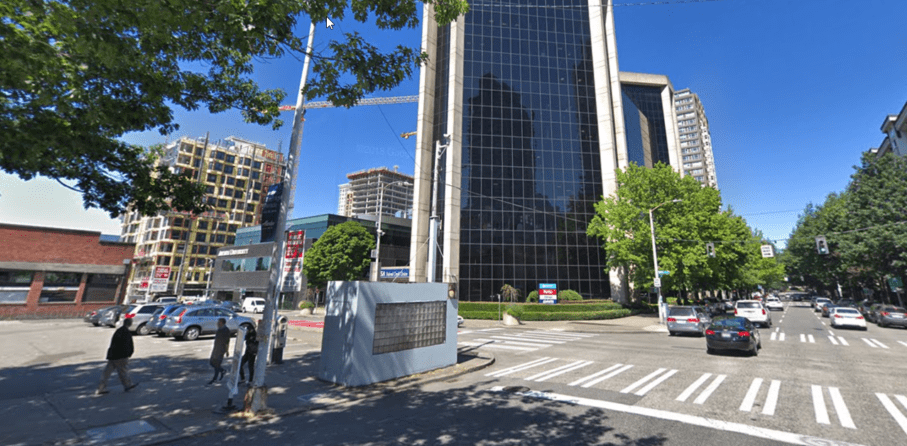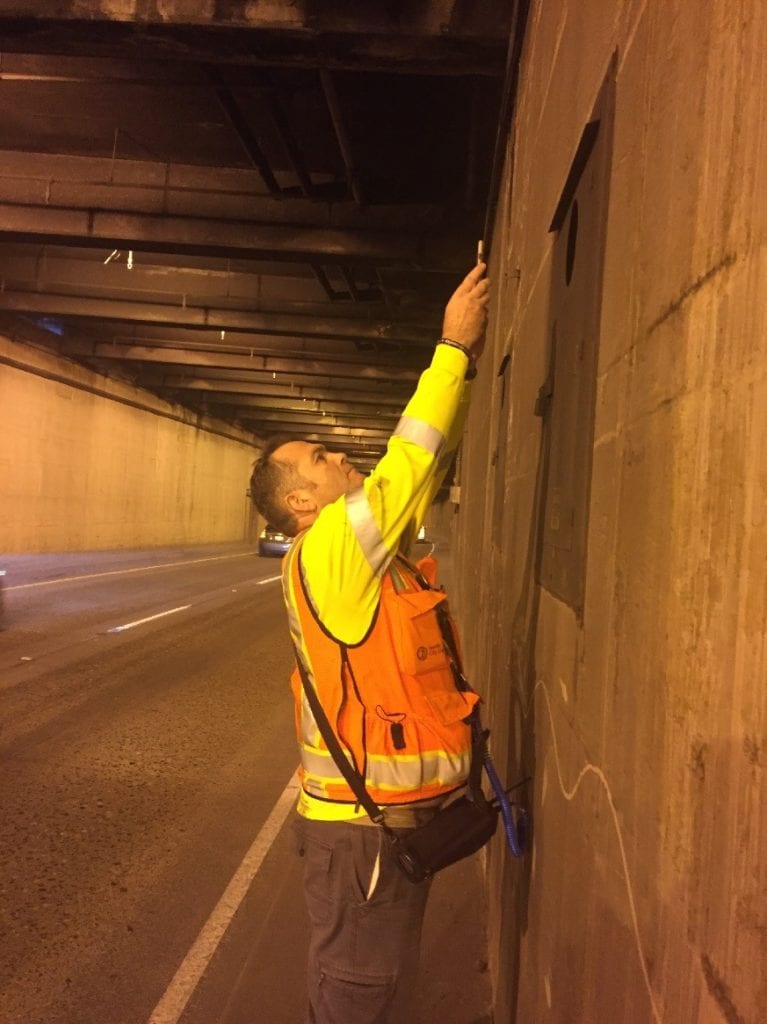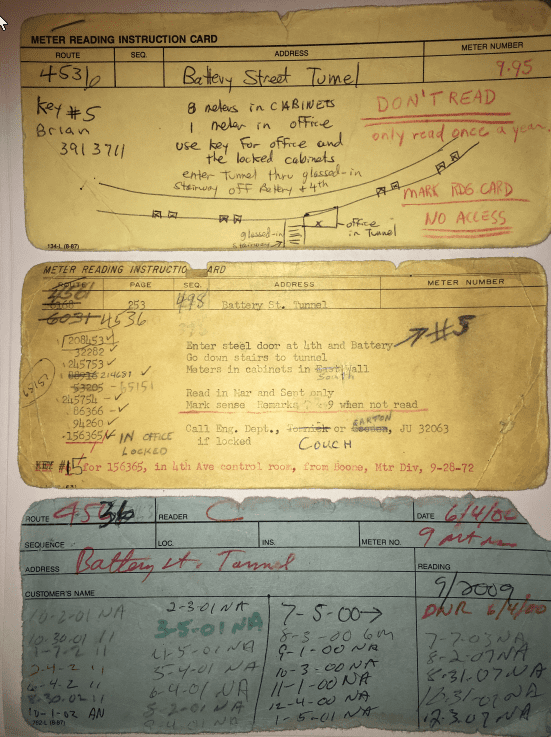 It’s hard to forget driving past the view of Puget Sound on the viaduct and coasting through the Battery Street Tunnel on our daily commutes, trips to Green Lake, or any of the many destinations in and out of the city. What you may not have seen were the nine meters that lined the Battery Street Tunnel and more so, the meter readers that were tasked with checking those meters in the narrow tunnel.
It’s hard to forget driving past the view of Puget Sound on the viaduct and coasting through the Battery Street Tunnel on our daily commutes, trips to Green Lake, or any of the many destinations in and out of the city. What you may not have seen were the nine meters that lined the Battery Street Tunnel and more so, the meter readers that were tasked with checking those meters in the narrow tunnel. Meter Reading in the Tunnel
It’s hard to forget driving past the view of Puget Sound on the Alaskan Way Viaduct and coasting through the Battery Street Tunnel on daily commutes, trips to Green Lake, or any of the many destinations in and out of the city. What you may not have seen were the nine electrical meters that lined the Battery Street Tunnel and more so, the meter readers that were tasked with checking those meters in the narrow tunnel.
City Light employee Laurent Delsuc spent five years reading the meters in the tunnel. The meters tracked the electricity used to power the lights and fans across the tunnel ceiling. Meter readers before Delsuc timed their trips into the tunnel when it was shut down for major events. However, Delsuc opted to read the meters when cars were rushing past.

Getting to the Meters
Laurent describes the access to the tunnel as a journey in itself. The entrance to the tunnel was near the Fire Station at 4th Avenue and Battery Street. Due to safety concerns, Delsuc was unable to keep a key so the fire chief provided access each time he needed to enter the tunnel and monitored his progress through security cameras. As he made his way down into the tunnel, there was the possibility of running into people seeking refuge inside the tunnel and on the stairways.
Once down the stairs, the route to the meter location was like a maze. The directions were quite detailed and included walking on a three-foot sidewalk near the main tunnel roadway. “The safety hazards were plentiful,” says Delsuc. “You can see tire tracks or bumper marks above the meters’ location, showing the close vicinity of the meter to traffic.”

Living on the Edge
When Delsuc visited the tunnel for the first time, he had to step into the roadway between traffic because of how high the meters were located. He eventually moved closer to the meter’s location and reached up to take photos of the meters. Meter reading instruction cards were usually provided to give direction on where the meters are located, but the ones for the tunnel were missing. As a result, Delsuc had to explore the tunnel, going through narrow walkways and opening fire doors that separated the two directions of traffic.
Over the years, Delsuc and others eventually learned the locations of the meters and found the missing instruction cards. Working in the Battery Street Tunnel was one of Delsuc’s most memorable projects that he has taken on as a meter reader. Many City Light employees still refer to him as the “Tunnel Man” today.

Safety First
City Light meter readers are often presented with hazards while working on the job. The utility emphasizes the importance of safety through trainings that teach employees situational awareness and mitigate dangers they encounter. If employees feel unsafe or see an unsafe situation, there are systems in place for analyzing and reporting any possible dangerous locations with the utility’s Safety, Health and Wellness division.
Looking Ahead
As we head into a new chapter of Seattle’s transportation infrastructure, we take this moment to look back and appreciate the behind-the-scenes work that people like Laurent Delsuc did for many years to keep the Battery Street Tunnel functioning. We thank him and others for keeping us safe throughout the years.
Reaching a Milestone
As the removal of the Alaskan Way Viaduct progressed over the summer of 2019, eight of the nine meters were removed from the tunnel walls.
One meter was requested to stay active in the control room to temporarily power lighting and fans during construction.